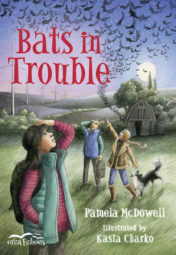 In Bats in Trouble, Tyler explains wind energy in a very simple way: “It’s the opposite of a fan,” he says. “A fan uses energy to make wind, but a turbine uses wind to make energy.”
In Bats in Trouble, Tyler explains wind energy in a very simple way: “It’s the opposite of a fan,” he says. “A fan uses energy to make wind, but a turbine uses wind to make energy.”
But how does that happen?
First off, wind doesn’t actually push the giant blades of a wind turbine. The blades are shaped like the wing of an airplane and work in much the same way. As wind passes over the blade, a difference in air pressure is created above the blade and below the blade. This creates lift for an airplane. For a wind turbine, the blades will begin to spin.
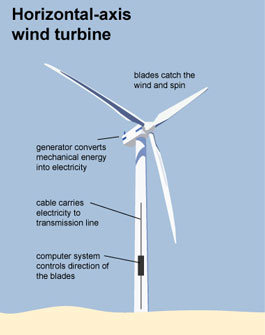
Source – adapted from National Energy Development Project
The blades will begin turning at wind speeds of 12 km/hr and will produce electricity 70 – 80% of the time. When wind is stronger, they will produce more energy, though the turbine will shut down if the wind is too strong, more than 88 km/hr, to prevent stress and breakage of the equipment.
The wind produces kinetic energy which turns the blades of the turbine. The blades turn the rotor, gears, and drive shaft inside the nacelle, producing mechanical energy. A generator converts this into electrical current that travels through cables to a substation that converts it to a higher voltage that customers can use.
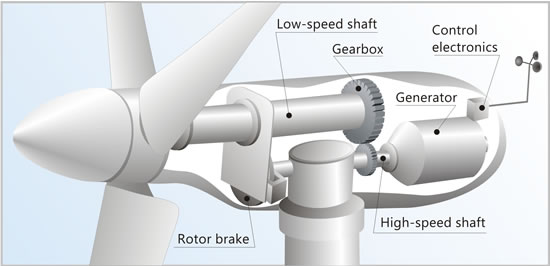
The nacelle is the gearbox at the top of the turbine.
The amount of electricity a turbine produces can be increased in a couple of ways.
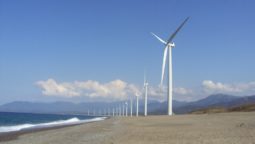
Wind farms have been built along shore lines and in oceans all over the world!
Longer blades will produce more power; in fact, doubling the length of the blades will produce four times as much power. Building a wind farm at sea level will increase productivity, because turbine blades turn more easily in heavier, denser air. In Alberta, our wind farms are at a higher elevation, where wind is thinner and lighter, so the turbines are less productive. Good thing it’s almost always windy here!
If you can get up close to a wind turbine, you can get a good sense of how huge they are. The tower may be more than 65 m tall with blades that are over 40 m long. To prevent the turbine from being torn off the earth in the wind, 102 tension bolts secure it in a foundation of concrete that is 9 – 10 m deep and 4 m across.
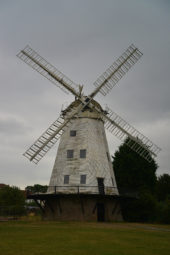
Windmills have also been used to grind grain and cut wood at sawmills.
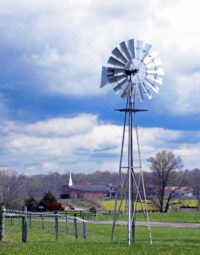
Windmills are still used by ranchers to pump water for livestock.
Wind farms are designed to last 25 years or more. There is little maintenance required, compared to other forms of electricity, like hydro or nuclear facilities. Technology has improved dramatically over the years, making wind energy less expensive, but scientists continue to look for improvements. Researchers also continue to look for ways to keep bats and birds safe around wind turbines.
